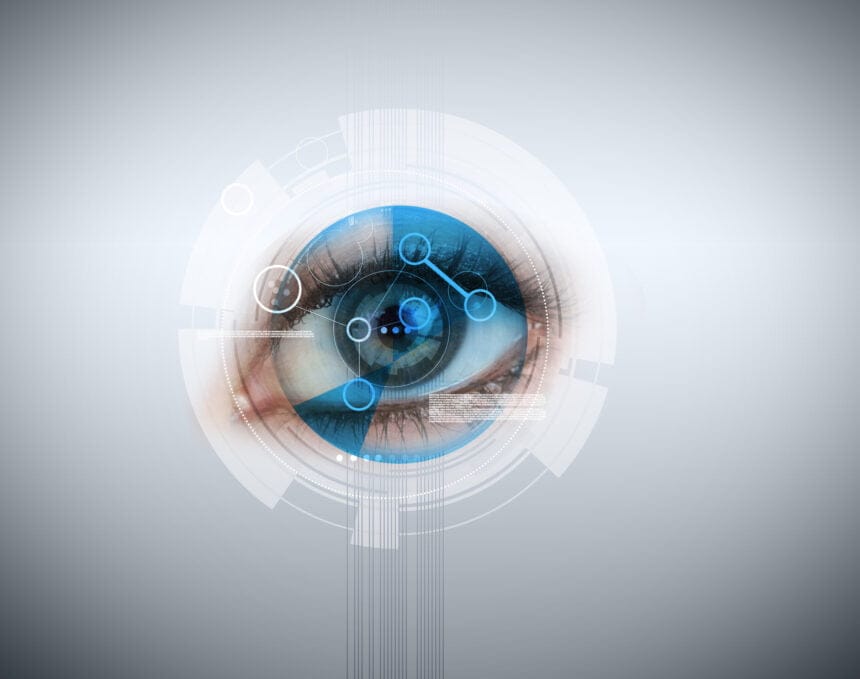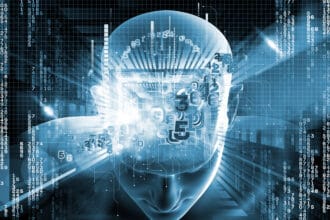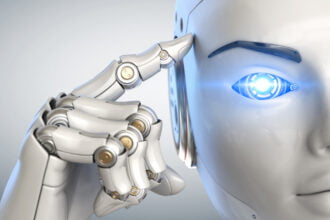AI-powered image recognition is surely one of the game-changers in many industries, including modern security systems, where image recognition enhances surveillance, authentication, and threat detection. In this post, we will show you how AI-powered image recognition works with modern security systems and why is it so beneficial.
Let’s start with a short introduction; at its core, AI image recognition involves the use of advanced algorithms powered by deep learning techniques to enable computers to “see” and interpret visual information. AI image recognition technology has allowed computers and other devices to analyze and “understand” visual data with amazing accuracy.
We have talked about how AI helps with facial recognition. This is one of the most obvious examples of how image recognition can work.
How AI image recognition works
In general, AI image recognition is powered by a technology known as computer vision (CV). Computer vision comprises a broad range of tasks, including the following:
- Image classification
- Object detection
- Image segmentation
All of those applications are essential components of modern image recognition. And then, we also have image processing – a technology that involves converting images into digital form and performing various operations to enhance their quality or extract useful information out of them.
AI-POWERED IMAGE RECOGNITION SOLUTIONS
Here, it is vital to mention several important AI-related technologies such as facial recognition and object recognition. The first technology has found applications especially in mobile devices and security systems, e.g., concerning access management. Object recognition, on the other hand, enables computers and AI-powered algorithms to identify and classify objects within images. This technology has numerous applications as well. In security systems, it’s used e.g., to detect potentially dangerous objects such as weapons.
How AI image recognition aids modern security systems
By leveraging advanced algorithms and deep learning techniques, AI image recognition has transformed traditional security measures, enabling organizations to detect and respond to threats with unprecedented speed and accuracy.
Here’s how this process works: First, AI image recognition analyzes visual data captured by surveillance cameras or other imaging devices. These devices usually use computer vision algorithms to process and interpret images in real time. They are capable of identifying objects, people, and activities (e.g., violent behavior) within the camera’s field of view.
Next, by analyzing patterns and identifying anomalies, AI image recognition systems can detect potential security threats, such as unauthorized access, suspicious behavior, or intrusions (the aforementioned access management systems).
Here, one of the key components of AI image recognition in modern security systems is facial recognition. These algorithms can detect and analyze facial features captured in images or video footage to identify individuals and match them against a database of known faces. This way, modern security systems can authenticate people entering the building or the premises, grant them access to secure areas, and track the movement of people within a monitored environment.
All those applications are immensely helpful in airports, government facilities, as well as corporate offices and residential complexes.
As we mentioned earlier, AI image recognition also comes with object detection and tracking features. By identifying and tracking specific objects or vehicles within a monitored area, security systems can detect suspicious activities, such as:
- Loitering
- Package abandonment
- Vehicle tampering
Moreover, AI image recognition is increasingly integrated with other security technologies, such as access control systems, intrusion detection systems, and video analytics platforms. By combining AI image recognition with these additional technologies, security systems can provide so-called multi-layered protection against a wide range of security threats.
Technological advancements in AI image recognition
AI, such as other AI-related technologies is continually growing driven especially by advancements in machine and deep learning. Convolutional Neural Networks (CNNs) have proven particularly effective for image recognition tasks. With CNNs, image recognition devices and algorithms are capable of achieving unprecedented levels of accuracy and performance.
TOOLS FOR AI IMAGE RECOGNITION
Nowadays, companies working on image recognition don’t need to start from scratch when building their AI image recognition solutions. We now have access to a wide range of tools and platforms, such as:
- Google Cloud Vision API
- Amazon Rekognition
- Azure Custom Vision Service
These tools can provide pre-built models and APIs for image recognition tasks, thus significantly shortening and streamlining the development process. These platforms offer features like image labeling, object detection, and facial recognition, making it easier for developers to incorporate AI image recognition into their applications.
Wrapping up
Without a doubt, AI image recognition is a crucial and transformative technology with implications for various industries. By enabling computers to interpret visual data with close to human-like accuracy, AI image recognition opens up new possibilities for innovation and efficiency in modern security systems, making them more effective, accurate, and cheaper to operate. As advancements in machine learning and computer vision continue, we can expect AI image recognition to play an increasingly vital role in shaping the future of modern security solutions, both online and offline.
If you operate a company or a facility where security is of paramount performance, we encourage you to take a closer look at this technology and see how it can be implemented in your business to enhance your current security measures.
If you’d like to know more about how AI works in image recognition, not just in security systems but also other industries and sectors, take a look at this article on Addepto’s blog: AI Image Recognition in 2024 – New Examples and Use Cases.











